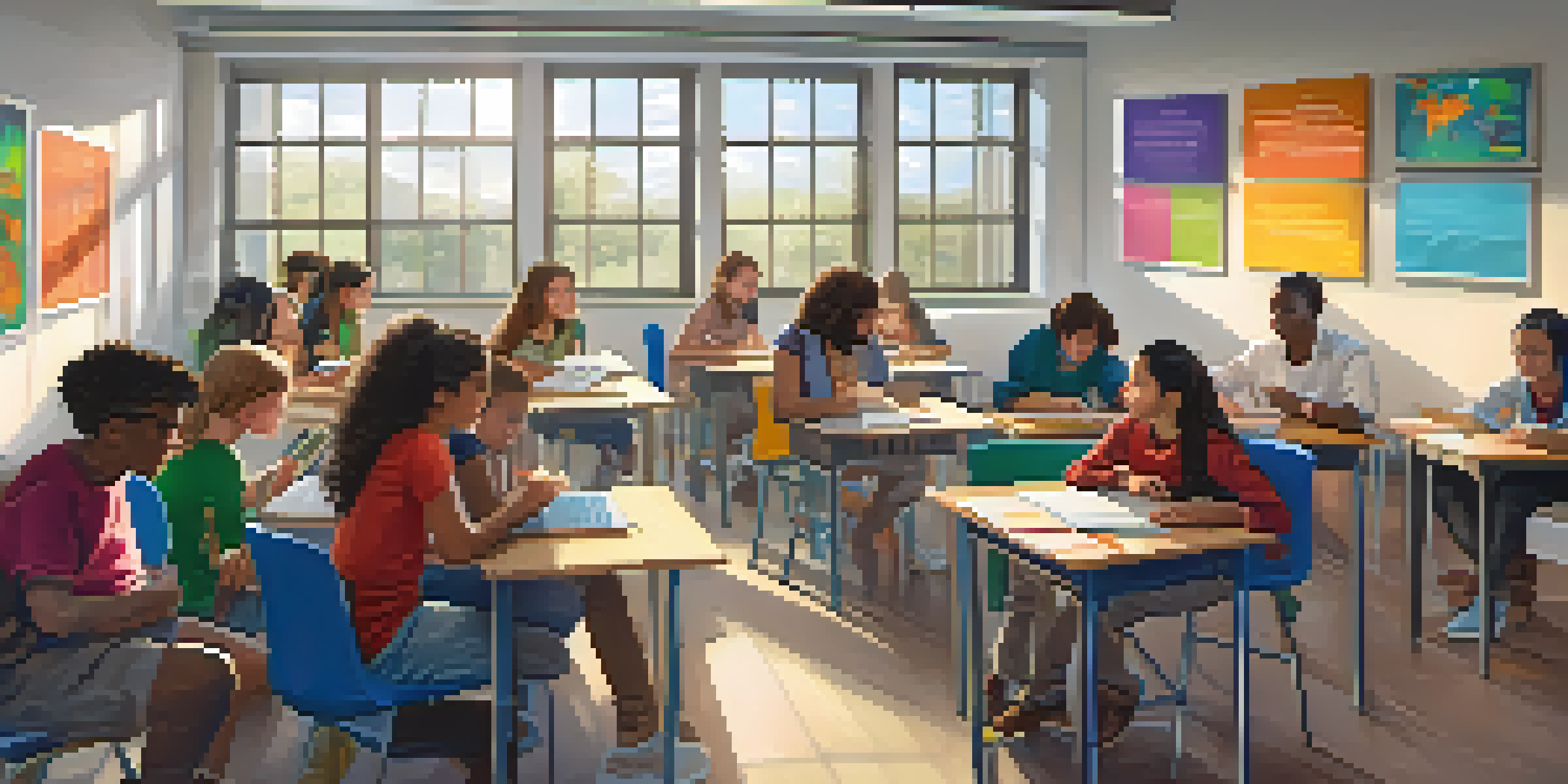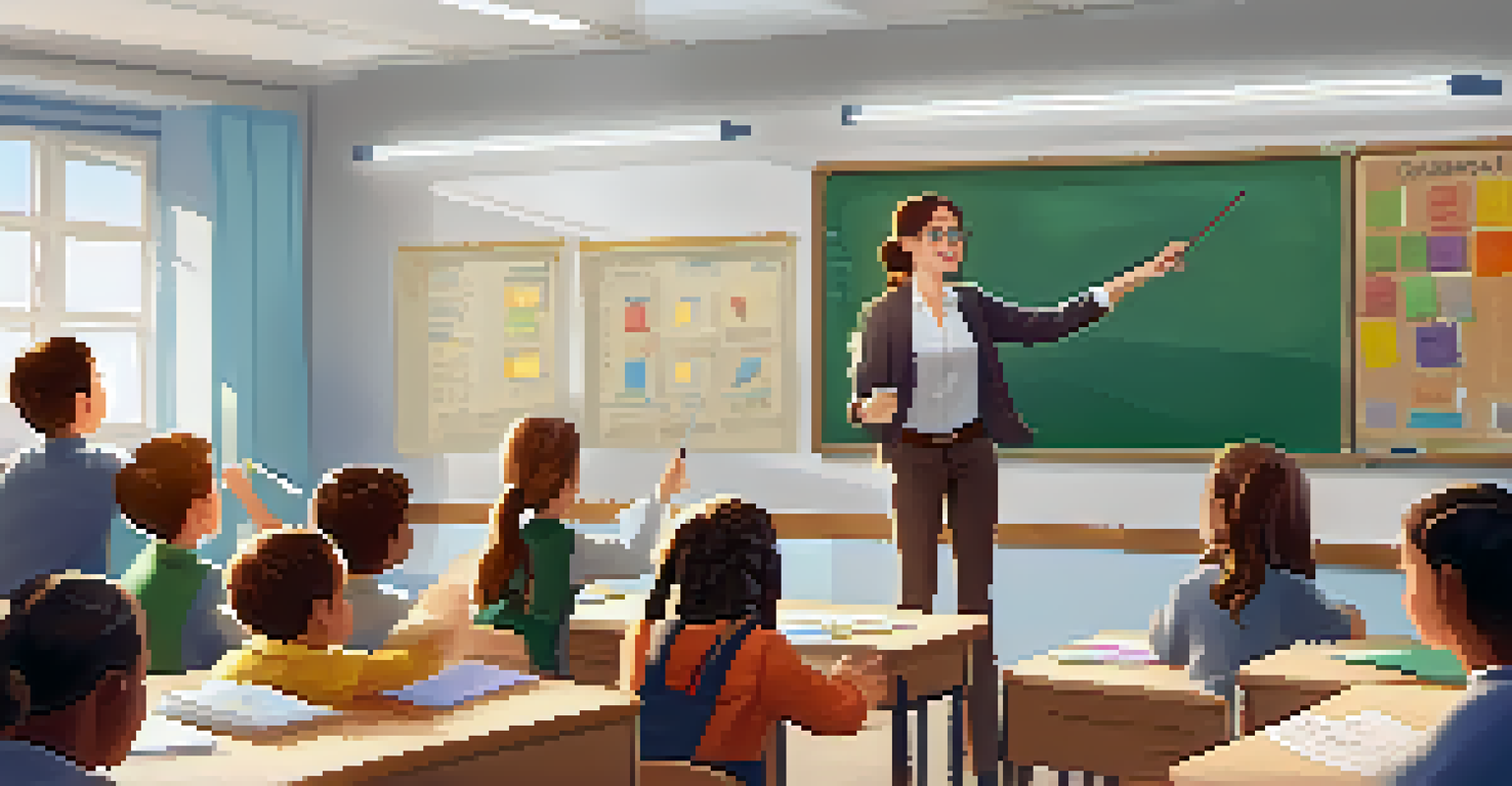How OER Benefits Teachers and Learners in the Classroom

Understanding Open Educational Resources (OER)
Open Educational Resources (OER) are teaching and learning materials that are freely accessible to everyone. They can include textbooks, videos, quizzes, and other resources available in the public domain or under an open license. This means educators and students can use, adapt, and share these materials without the restrictions typically associated with traditional educational resources.
Education is the most powerful weapon which you can use to change the world.
OER is not just about free resources; it’s about collaboration and innovation in education. Teachers can customize these materials to fit their unique classroom needs, ensuring that all students receive education that is relevant and engaging. This flexibility fosters a more inclusive learning environment, catering to diverse learning styles and needs.
Moreover, OER encourages a culture of sharing and community among educators. By collaborating and exchanging resources, teachers can learn from one another and enhance their teaching practices. This sense of community can lead to improved student outcomes, as educators effectively share best practices and innovative strategies.
Cost Savings for Educators and Students
One of the most significant benefits of OER is the cost savings it offers to both teachers and students. Traditional textbooks can be prohibitively expensive, creating barriers to education for many learners. With OER, students can access high-quality materials without the financial burden, enabling them to focus on their studies rather than worrying about costs.

For educators, utilizing OER means they can allocate their budgets to other essential resources, such as technology or classroom supplies. This financial flexibility allows for a more enriched learning environment. Additionally, many OER materials are continually updated, ensuring that teachers have access to the latest information without incurring extra costs.
Cost Savings for Education
OER significantly reduces educational costs for both students and teachers, allowing resources to be allocated to other essential areas.
These cost savings can lead to increased enrollment and retention rates in educational programs. When students know they can access necessary materials for free, they are more likely to pursue their education and stay engaged. This positive cycle benefits both educators and institutions, as they can foster a supportive learning atmosphere.
Enhanced Engagement Through Customizable Learning
OER allows educators to tailor learning materials to meet the specific needs of their students. This customization can enhance engagement by making lessons more relevant and relatable. For instance, a science teacher may adapt a lesson plan to include local environmental issues, which can spark students' interest and encourage them to participate actively.
The beautiful thing about learning is that no one can take it away from you.
Moreover, the interactive nature of many OER materials, such as videos and simulations, can capture students' attention in ways traditional textbooks cannot. This multimedia approach caters to various learning styles, making it easier for all students to grasp complex concepts. When learners are engaged, they are more likely to succeed academically.
The ability to personalize learning experiences also promotes student agency. When students have a say in their learning materials, they feel more invested in their education. This ownership can lead to deeper understanding and a genuine passion for learning, benefiting both students and educators in the long run.
Promoting Collaborative Learning Environments
OER encourages collaboration among students, fostering a sense of community in the classroom. When learners work together using shared resources, they can engage in discussions that deepen their understanding of the material. This collaborative approach not only enhances learning but also helps build essential social skills.
Teachers can also collaborate with one another, sharing OER materials and teaching strategies. This collective effort can lead to innovative lessons and improved teaching practices. When educators collaborate, they can address challenges more effectively, creating a supportive network that benefits everyone involved.
Enhanced Engagement and Customization
OER enables educators to tailor learning materials to their students' needs, fostering deeper engagement and understanding.
Additionally, OER can facilitate partnerships with external organizations, such as museums or community groups, enriching the learning experience. These partnerships can provide students with real-world context and applications for their studies, making learning more meaningful and applicable to their lives.
Fostering Lifelong Learning Skills
Using OER in the classroom helps nurture lifelong learning skills in students. By engaging with diverse resources, learners develop critical thinking and problem-solving abilities. These skills are essential in today's ever-changing world, where adaptability and creativity are key to success.
Moreover, as students encounter various types of OER materials, they become more proficient in research and information literacy. They learn how to evaluate sources, synthesize information, and apply their knowledge in practical ways. These competencies are vital not just for academic success, but for personal and professional development as well.
As students grow into independent learners, they become more motivated to seek out knowledge on their own. This enthusiasm for learning can lead to a more informed and engaged citizenry, contributing positively to society. By fostering these skills through OER, educators are equipping students for a lifetime of discovery.
Access to Quality Educational Materials
OER provides access to high-quality educational materials that might otherwise be out of reach for many students. These resources are often created by experts in their fields, ensuring that the content is accurate and relevant. This access can level the playing field for students from various backgrounds, promoting equity in education.
Furthermore, many OER platforms allow for peer review, ensuring that the materials are continually vetted and improved. This collaborative process means that educators and students can trust the resources they are using, leading to more effective learning outcomes. When students feel confident in their materials, they are more likely to engage deeply with the content.
Fostering Collaboration and Innovation
OER encourages collaboration among educators and students, leading to innovative teaching practices and a supportive learning environment.
Additionally, the diversity of OER offerings means that students can explore a wide range of perspectives and ideas. This exposure to different viewpoints fosters critical thinking and encourages students to develop their opinions. Ultimately, access to quality materials enriches the learning experience and prepares students for an interconnected world.
Encouraging Innovation in Education
OER promotes innovation by challenging traditional educational practices. With the freedom to adapt and share resources, educators are empowered to experiment with new teaching strategies and technologies. This creative approach can lead to more effective and engaging learning experiences in the classroom.
Moreover, OER fosters a culture of continuous improvement. Educators can share their adaptations and receive feedback from peers, leading to ongoing enhancements in teaching methods. This collaborative spirit can inspire teachers to think outside the box and develop innovative solutions to common challenges.

As educators embrace OER, they can also inspire their students to innovate. By modeling creativity and adaptability, teachers encourage learners to think critically and explore new ideas. This cycle of innovation benefits the entire educational ecosystem, ultimately leading to better outcomes for students and teachers alike.